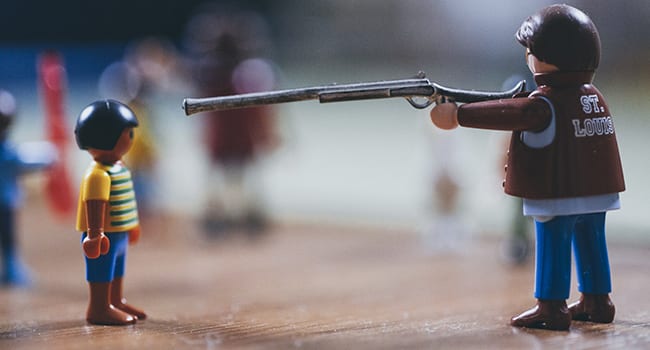 A video is circulating on social media of a white woman in New York City calling 911 to report being threatened by “an African American man.”
A video is circulating on social media of a white woman in New York City calling 911 to report being threatened by “an African American man.”
The truth is that the woman was allowing her dog to wander in a bird-watching section of Central Park and the man asked her to put her dog on a leash.
Rather than comply, the woman became indignant.
Wisely, the African American gentleman took out his phone and began filming the incident. Had he not done so, it would have been his word against hers and history demonstrates that this doesn’t normally turn out well for black men.
News outlets are finally beginning to report the deadly, blatant racism demonstrated toward African American men. We’re shocked to learn about people being hunted down and shot by white men or strangled by police officers.
The truth is that this has been going on, literally, for centuries.
It has become so ingrained in Western consciousness that when one is in doubt as to who committed a crime, it’s easy to point the finger at a black man.
The United States has an incarceration rate far higher than any other developed country. And according to National Association for the Advancement of Colored People (NAACP) statistics, “African Americans are incarcerated at more than five times the rate of whites.”
Archie Williams, a black singer who recently auditioned for America’s Got Talent, was wrongfully accused of a crime and spent over three and a half decades in the maximum-security Louisiana State Penitentiary better known as “the Angola Plantation.”
Williams states, “There are many innocent people at Angola – guys who have served over 50 years. I’m happy to be cleared finally, but I’m not free until they are free.”
The racism displayed toward African Americans strikes me as very strange. I lived in the United States for years, including one year in the 1980s on the Gulf Coast of Mississippi, not far from New Orleans.
I felt very welcome in the African American community, especially when I went to church. I also noticed that there was always a white Catholic church and a black Catholic church, even in very small towns. I was never shunned in the white churches, though I did find the atmosphere rather austere.
The two words that come to mind when I think of the African American communities are warmth and joy. Though the religious celebrations were certainly more exuberant than I was used to, I got the feeling that people were sincerely happy to see me and I immediately felt at ease.
A few years after I left Mississippi, I went to Kinshasa, the capital of the Democratic Republic of Congo. I was struck by the same welcoming spirit in Africa. Though I was different and I struggled with the language, I was accepted for who I was.
While I did experience some animosity due to mistrust of white colonialists, I found that when I was unfairly judged, someone else would always speak up on my behalf.
Not only was there a welcoming spirit, there was a sense of moral courage that permeated the culture.
So what’s the lesson here?
First, we need to look at statistics and ask open-minded questions to determine why things are the way that they are. Increased crime rates, for example, result from social problems, including lack of access to education. If we address the underlying issues, the situation always improves.
In order to address these issues, however, we need to acknowledge the impact of racist myths. There is no good or bad race of people, there are just people.
We also need to remember that when we take accountability for our behaviour and stop looking for scapegoats, as the woman in New York should have, we have taken a significant step to improve our society.
Troy Media columnist Gerry Chidiac is an award-winning high school teacher specializing in languages, genocide studies and work with at-risk students.
The views, opinions and positions expressed by columnists and contributors are the author’s alone. They do not inherently or expressly reflect the views, opinions and/or positions of our publication.


